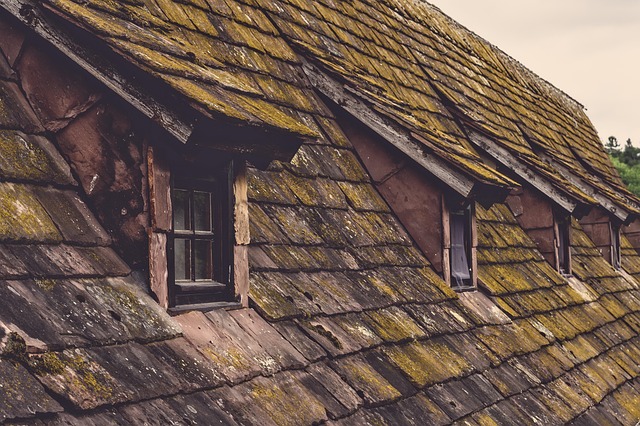After a harsh winter storm, conduct thorough roof inspections for missing/damaged shingles, water damage, and structural issues. Implement regular roof maintenance tips including gutter cleaning, prompt repairs, and sealing to prevent leaks, safeguard against further weather damage, and preserve your home's structural integrity year-round.
After a harsh winter storm, it’s crucial to inspect your home for potential damage. This guide provides essential roof maintenance tips to ensure your property’s structural integrity. Learn how to assess your roof for missing or damaged shingles, identify leaks and moisture intrusion, evaluate gutters and downspouts, and prioritize repairs to prevent further storm-related issues. By following these expert roof maintenance tips, you can protect your home and keep it safe from future weather events.
Assess Roof for Structural Integrity After Winter Storms
After a harsh winter storm, one of the first steps in inspecting your home for damage is to carefully assess the roof’s structural integrity. Roofs often take the brunt of intense weather conditions, so it’s crucial to look for any signs of wear and tear. Start by walking around the exterior to visually inspect for missing or damaged shingles, tiles, or metal panels. Look for any cracks or holes that may have formed due to wind damage or ice buildup.
Don’t neglect to check the roof’s underlayment and flashing for water damage or dislodging. These components play a vital role in protecting your home from leaks. If you notice any damaged or deteriorated areas, it’s recommended to seek professional roof maintenance tips and repairs to ensure your roof is secure and prepared for the next storm.
Inspect for Missing or Damaged Shingles
After a harsh winter, it’s crucial to inspect your roof for any missing or damaged shingles as part of essential roof maintenance tips. Walk across your roof (if safe) or use a pair of binoculars to scrutinize its condition. Look for loose, curled, cracked, or missing shingles. These could be signs of significant wear and tear caused by the extreme weather conditions.
During your inspection, pay close attention to areas where snow and ice have built up, as well as corners and edges, which are often more vulnerable to damage. Any damaged shingles should be replaced promptly to prevent further deterioration and potential leaks. Regular roof maintenance, including checking for missing or damaged shingles, is a proactive step in ensuring the longevity of your roofing system.
Look Out for Leaks and Moisture Intrusion
After a harsh winter, it’s crucial to inspect your property for any signs of damage or wear, especially focusing on potential leaks and moisture intrusion. One of the first places to check is your roof. Look for missing shingles, damaged gutters, or signs of water stains on the interior ceilings and walls. These could indicate that snow accumulation or strong winds have caused weaknesses in your roof’s structure.
Regular roof maintenance tips include checking for any gaps or cracks around vents and chimneys, as these areas are common sources of leaks. Also, be vigilant for blisters or bubbles forming under shingles, which can signal moisture buildup. Promptly addressing these issues is essential to prevent further damage and ensure the integrity of your home’s protective barrier against the elements.
Evaluate the Condition of Gutters and Downspouts
After a harsh winter storm, one of the first things to inspect on your property is the condition of your gutters and downspouts. These components play a vital role in directing rainwater away from your roof and foundation, preventing potential water damage. Look for signs of damage such as bends, breaks, or separation from the roof. Clogged debris can also cause overflow, so ensure they are free of leaves, branches, and ice buildup. Regular gutter cleaning and maintenance are essential roof maintenance tips to keep your home safe during all seasons.
Winter storms can be particularly harsh on gutters due to the weight of ice and sleet buildup. Downspouts should also be checked for any blockages or misalignments that could lead to water pooling near your foundation. Properly maintained gutters and downspouts are crucial in protecting your roof and home from potential storm damage, ensuring long-term integrity and preventing costly repairs.
Prioritize Repairs to Prevent Further Damage
After a harsh winter, it’s crucial to prioritize repairs to prevent further damage to your property. Start with a thorough inspection, focusing on areas most susceptible to weather-related issues, such as the roof. Look for missing or damaged shingles, flashing, or signs of water intrusion. Address these issues promptly using suitable roof maintenance tips, like replacing missing shingles and sealing any gaps.
Remember, fixing problems early can save you from more extensive and costly repairs later. Regular roof maintenance is an effective way to protect your home’s most critical component—the roof—from the elements. By keeping on top of repairs, you’ll ensure the integrity of your structure and avoid potential safety hazards that could arise from neglected damage.
After a harsh winter storm, it’s crucial to thoroughly inspect your roof for any signs of damage or wear. By regularly assessing the structural integrity, checking for missing or damaged shingles, and looking out for leaks, you can maintain your roof’s condition and prevent further complications. Don’t forget to evaluate gutters and downspouts, as they play a vital role in protecting your home from moisture intrusion. Prioritizing repairs promptly will not only ensure a safe and secure space but also help save on costly replacements in the long run, making these roof maintenance tips indispensable for homeowners.
